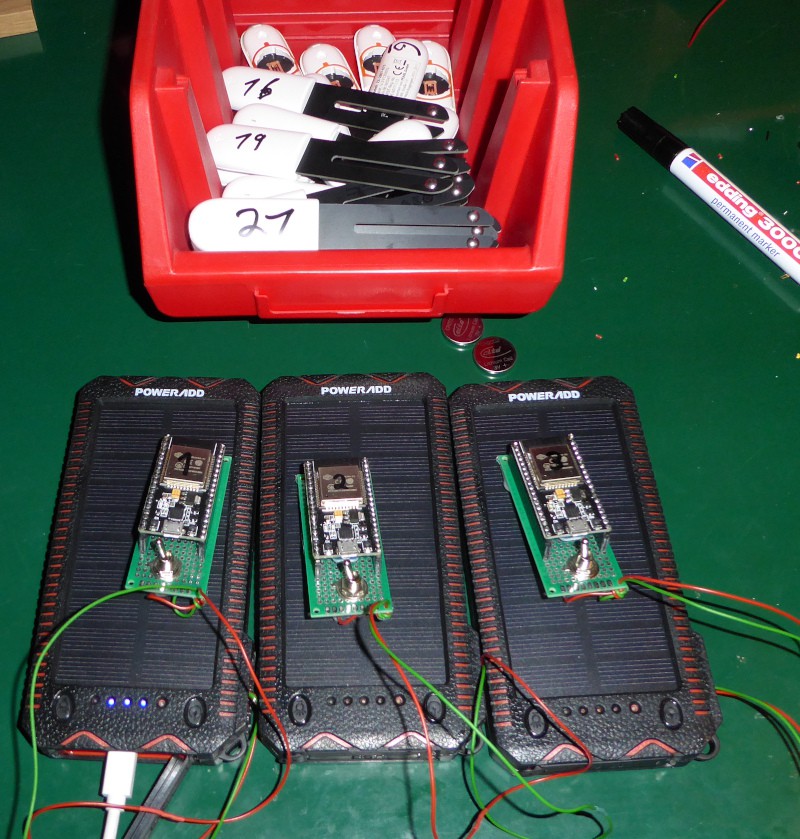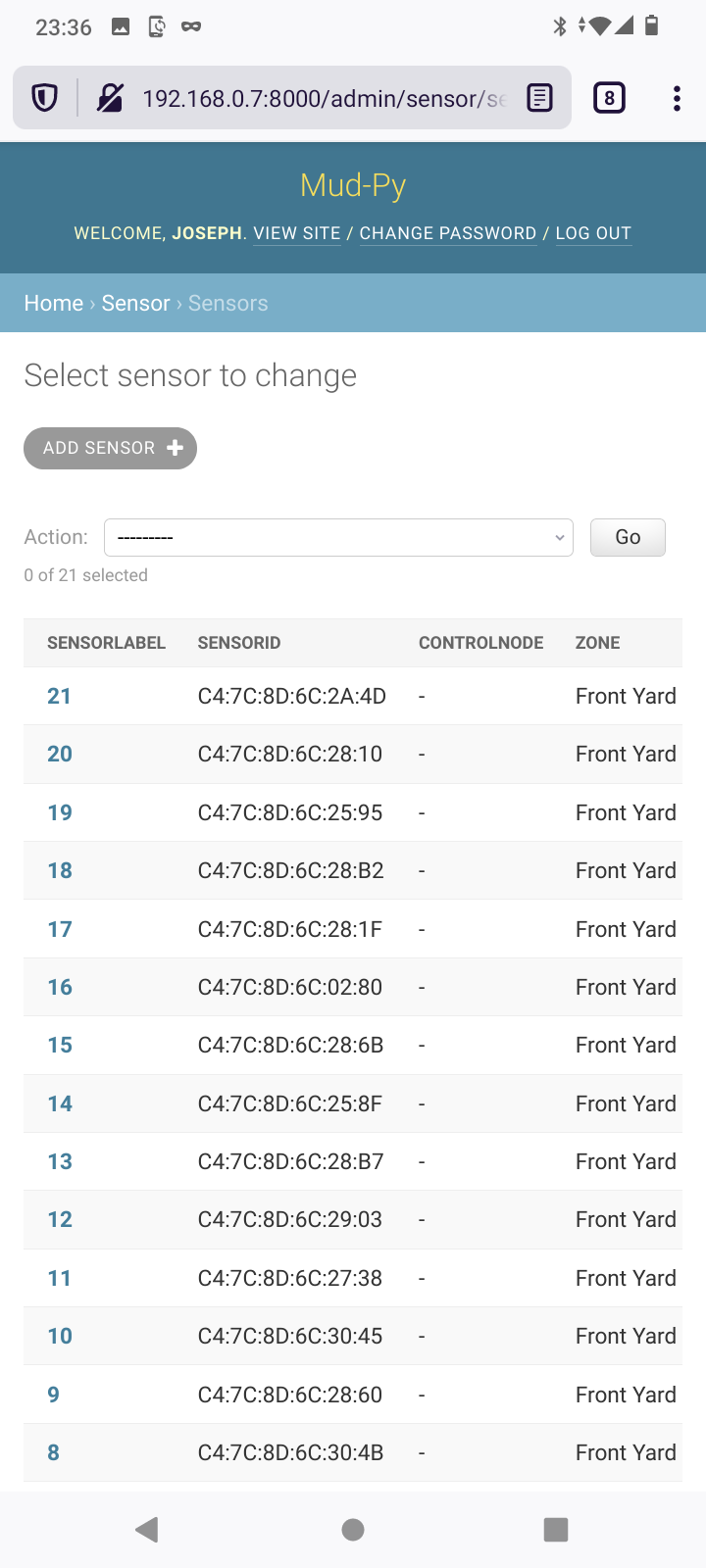I now have all the parts together.
- 21 sensors - I just finished gathering the Bluetooth IDs and marking them so I can tell them apart. I also found one sensor where the LED doesn't work.
- 3 solar powered control nodes.
- 1 Raspberry Pi running the Mud-Py data collection software.
Here's the hardware ready to go out in the yard:

Here's the sensor management page with all the sensors:

All that's left is to position the sensors in the yard and park the control nodes in their jars - and then write the software to analyze the collected sensor data, of course.
I spent a little time this evening expanding the Mud-Py software to make it capable of a couple of things I KNOW are going to happen.
- I'm going to probably have to change the position of some of the sensors - I probably won't get them set right in the yard or I might get them out of place in the map.
- I'll probably have to replace a sensor or two along the way. There'll be 15 of them in the front yard in amongst the flowers, and it is a sure bet that I'll step on one sooner or later.
To handle that kind of stuff, I've made it so that each sensor data entry has a location and the zone the sensor belonged to at the time the measurement was made. Done that way, I can select sensor data by zone and date/time and get a correct set of data no matter if the sensors were moved around.
I am still utterly fascinated by the way Django works with mobile devices.
Here's the sensor list as shown on my phone:

I didn't have to do a thing to the software at all to get it looking good on the phone. Django just does it right.
 Joseph Eoff
Joseph Eoff
Discussions
Become a Hackaday.io Member
Create an account to leave a comment. Already have an account? Log In.